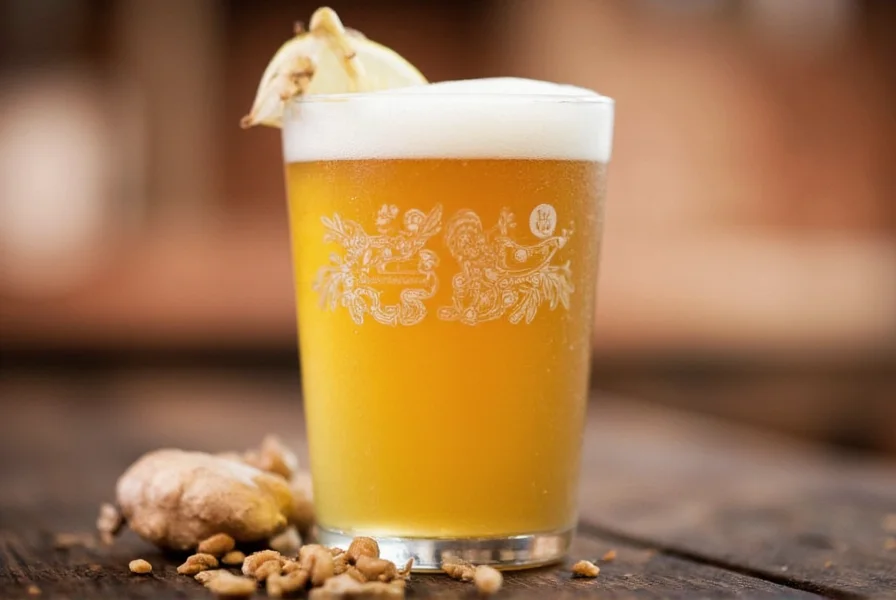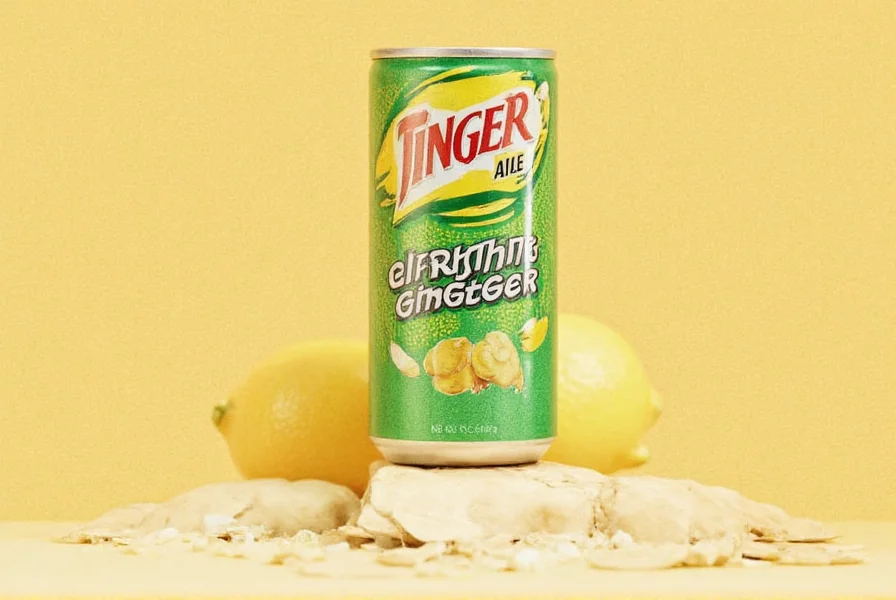Ginger ale marketed as ‘with ginger’ represents a growing category of beverages that prioritize authentic ginger content over artificial flavoring. Unlike conventional ginger ales that often use synthetic ginger flavor compounds, these products incorporate real ginger root extract or juice as a key ingredient. This distinction has become increasingly important as consumers seek beverages with recognizable, natural ingredients and potential wellness benefits associated with genuine ginger.
Understanding the ‘With Ginger’ Labeling
The phrase ‘with ginger’ on ginger ale packaging serves as a marketing signal that the product contains actual ginger rather than solely artificial flavors. In the United States, FDA regulations require that products labeled ‘with ginger’ must contain some amount of real ginger, though they don't specify minimum concentrations. This creates variation between brands – some may contain as little as 0.1% ginger extract while others approach 1%.
When examining ginger ale with ginger products, check the ingredient list for terms like ‘ginger root extract,’ ‘ginger juice,’ or ‘natural ginger flavor from ginger root.’ These indicate the presence of actual ginger compounds. Products listing only ‘natural flavors’ without specifying ginger root likely contain minimal to no real ginger content.
| Labeling Term | Typical Ginger Content | Key Indicators |
|---|---|---|
| "With Ginger" | 0.1-1.0% | Ginger root extract or juice listed in ingredients |
| "Made with Real Ginger" | 0.5-2.0% | Ginger appears higher in ingredient list |
| Standard Ginger Ale | Trace or none | "Natural flavors" without ginger specification |
Ginger Content and Bioactive Compounds
The primary value of ginger ale with ginger lies in its gingerol content – the bioactive compounds responsible for ginger's characteristic flavor and potential physiological effects. Fresh ginger contains approximately 1-2% gingerols by weight, but processing into beverages reduces this concentration significantly.
Studies analyzing commercial ginger beverages show that products labeled ‘with ginger’ typically contain 5-20mg of gingerols per 8-ounce serving. This compares to 1,000-2,000mg found in a typical therapeutic ginger supplement dose. While not sufficient for medicinal purposes, this amount may contribute to the beverage's distinctive flavor profile and potential mild digestive benefits.

Health Implications of Ginger Ale with Ginger
Ginger has been studied for its potential effects on digestion and nausea relief, with research suggesting gingerols may help modulate gastrointestinal motility. However, the concentration in ginger ale with ginger is generally too low to produce significant therapeutic effects. A 2022 review in the Journal of Food Science noted that most commercial ginger ales contain insufficient ginger compounds to match the doses used in clinical studies (typically 1,000-1,500mg).
That said, ginger ale with ginger offers advantages over standard ginger ale for those seeking beverages with more natural ingredients. The presence of actual ginger provides a more complex flavor profile with spicy, warming notes that artificial flavors cannot replicate. Additionally, products with real ginger typically avoid high-fructose corn syrup and artificial colors common in conventional ginger ales.
Brand Comparison and Selection Guide
When evaluating ginger ale with ginger products, consider these factors:
- Ginger concentration – Check if the brand specifies ginger content percentage
- Sweetener type – Many premium brands use cane sugar instead of high-fructose corn syrup
- Additional ingredients – Some include complementary botanicals like lemon or mint
- Processing method – Cold-pressed or minimally processed ginger retains more compounds
Notable brands offering genuine ginger content include Canada Dry Bold (0.3% ginger extract), Fever-Tree Refreshingly Light Ginger Ale (0.5% ginger root oil), and Q Mixers Ginger Ale (1% real ginger). Artisanal brands like Bruce's Ginger Cream and Bundaberg Ginger Beer typically contain higher ginger concentrations but are technically ginger beers rather than ginger ales.
Making Informed Choices
For consumers seeking ginger ale with ginger for its potential digestive benefits, understanding realistic expectations is crucial. While these products contain actual ginger, the concentration remains relatively low compared to therapeutic doses. They work best as part of a balanced approach to digestive wellness rather than as standalone remedies.
When selecting ginger ale with ginger, look for products that transparently disclose their ginger content and use minimal processing. Refrigerated varieties often contain higher ginger concentrations than shelf-stable options, as heat processing degrades ginger compounds. For those specifically seeking digestive support, consider pairing ginger ale with ginger with other ginger-containing foods or consulting a healthcare provider about appropriate ginger supplementation.
Frequently Asked Questions
Does ginger ale with ginger actually contain real ginger?
Yes, ginger ale labeled ‘with ginger’ must contain some amount of real ginger extract or juice according to FDA regulations. However, the concentration varies significantly by brand, typically ranging from 0.1% to 1.0%. Check the ingredient list for ‘ginger root extract’ or ‘ginger juice’ to confirm actual ginger content rather than artificial flavors.
Can ginger ale with ginger help with nausea?
While ginger has been studied for nausea relief, most commercial ginger ales with ginger contain insufficient ginger compounds (typically 5-20mg per serving) to produce significant therapeutic effects. Clinical studies on ginger for nausea typically use doses of 1,000-1,500mg. Ginger ale with ginger may provide mild comfort due to its flavor and warmth, but shouldn't be relied upon as a primary remedy for significant nausea.
How can I identify genuine ginger ale with real ginger content?
Look for specific ginger ingredients like ‘ginger root extract,’ ‘fresh ginger juice,’ or ‘natural ginger flavor from ginger root’ in the ingredient list. Products with higher ginger content typically list ginger earlier in the ingredients. Refrigerated varieties often contain more active compounds than shelf-stable options. Some premium brands disclose their ginger concentration percentage on the label.
Is ginger ale with ginger healthier than regular ginger ale?
Ginger ale with ginger generally offers a more natural ingredient profile compared to standard ginger ale. It typically contains actual ginger compounds rather than artificial flavors, and premium versions often use cane sugar instead of high-fructose corn syrup. However, both varieties remain sugar-sweetened beverages, so moderation is key. The primary advantage is the presence of gingerols and related compounds that provide distinctive flavor and potential mild digestive benefits.
What's the difference between ginger ale with ginger and ginger beer?
Ginger beer traditionally contains higher ginger concentrations (1-2%) and is often fermented, giving it a stronger, spicier flavor and sometimes minimal alcohol content. Ginger ale with ginger typically has lower ginger content (0.1-1.0%), is carbonated but not fermented, and has a milder flavor profile. Ginger beer generally offers more pronounced ginger characteristics and potentially higher levels of bioactive compounds compared to ginger ale with ginger.











 浙公网安备
33010002000092号
浙公网安备
33010002000092号 浙B2-20120091-4
浙B2-20120091-4